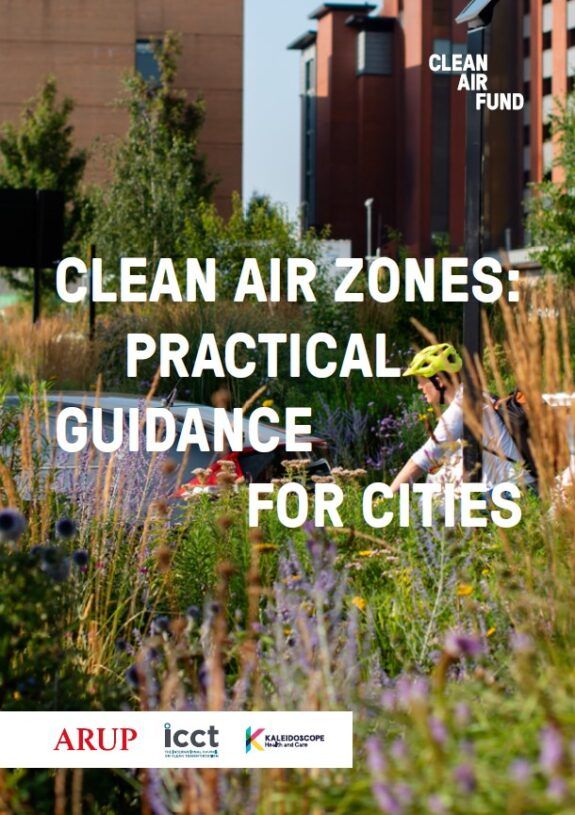
Air pollution is one of the leading causes of premature deaths worldwide, with a death toll of more than 8 million people each year, many in cities. It also has crippling economic consequences: the loss of productivity and health costs of treating conditions such as asthma, cancer and dementia runs into the trillions.
Vehicle emissions are often a major source of air pollution in cities. Clean Air Zones (CAZs), and similar schemes such as Low Emissions Zones and Zero Emission Zones, are one of the tools available to cities seeking to address this challenge. This guidance is for policy makers who are interested in CAZs, including elected leaders, mayors and officials in local governments and city administrations.
The guidance aims to support cities around the world at whatever stage they are in their pathway to clean air. It aims to help cities navigate through the process of developing and delivering a CAZ. It sets out key questions to answer, building on existing resources and supporting with lessons from elsewhere, bringing the entire process together into this comprehensive guidance. The guidance has been developed from an expert review of the current best practice for CAZ, a detailed literature review and 10 interviews, workshops and roundtables with cities from the Global North and Global South to enable cities to learn from each other.
Introducing a CAZ can deliver a host of benefits for local people and for cities. These include cleaner air, improved health which can lead to increased workforce productivity, safer streets, contributions to city’s net zero goals and sustainable urbanisation. CAZ, like any new policy can present challenges and, in some cases, their introduction has caused a higher-than-normal level of opposition. To help cities navigate these challenges, the guidance considers the wider regulatory and political context, among other issues. Also explored, is advice on how to ensure a CAZ has equity at the heart of its design and delivery, and the wider context, costs of implementation and complementary measures.
There is no “one-size-fits-all” approach to CAZs. Instead, every aspect needs to be tailored to the unique circumstances of each city. We have provided case studies which can be used to see different approaches or learn from others where they have faced similar challenges. Our guidance starts with helping cities to decide if a CAZ could be the right solution for the city.
With careful planning through each phase, CAZs can be a sustainable and beneficial option for many cities. Our guidance has the ‘golden thread’ of communication/stakeholder engagement, along with a focus on data and understanding of the issues, running through the document. We set out the core considerations for effective management of the CAZ to ensure confidence and consideration are built through the planning and design and into implementation and monitoring and evaluation, to ensure that the CAZ are effective and aligned to the city’s aims.


